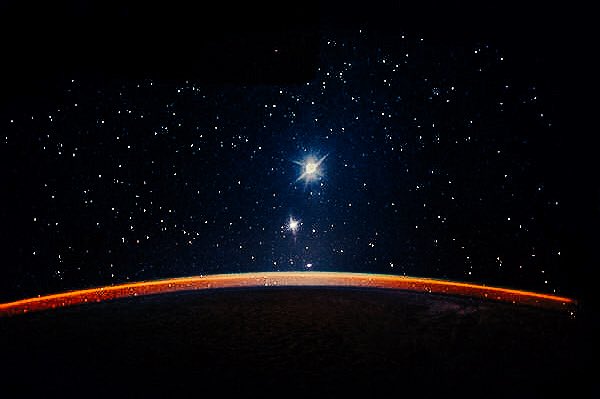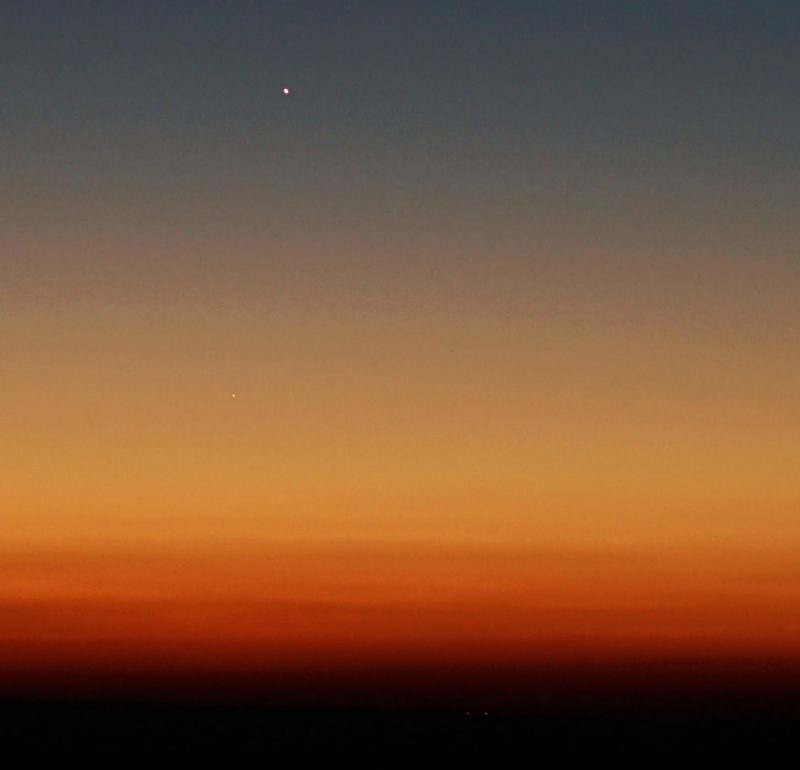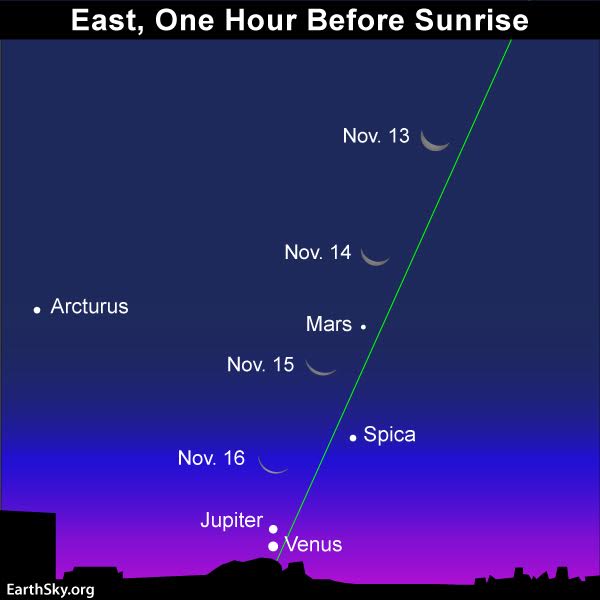
The two brightest planets visible from Earth are Venus and Jupiter. Only the sun and moon outshine them. When these two worlds come together in our sky, it’s a very special time to be outdoors, gazing skyward. They were last visible near one another, in the west after sunset, in August of 2016. They’ll be extremely close again – another conjunction, this time in the east before dawn – in November, 2017. At conjunction, Venus and Jupiter will be less than a moon-width apart!
When should you watch? They are closest on the sky’s dome on and around November 13, 2017. You’ll be looking east before sunup. Venus has been there for some months, very bright. It’s low in the sky at dawn now; you’ll want an unobstructed horizon (no trees or tall buildings). Only two such bright planets could withstand so much twilight in the sky. But indeed … these two worlds are bright!
Jupiter’s very recent conjunction with the sun – when it was traveling more or less behind the sun from Earth – happened on October 26. That event marked Jupiter’s official transition out of the evening sky and into the morning sky.
So Jupiter has just emerged from the dawn. After it passes Venus on November 13, Jupiter will ascend higher in the predawn sky each day.

A conjunction happens when two worlds have the same right ascension on Earth’s sky dome.
Watch for them for as many days as you can after November 13, too.
They’ll be beautiful.

What’s more, the waning moon will come along, just in time to join the show. Let the waning crescent moon guide your eye to Jupiter and Venus on or before the mornings of November 16 and November 17.
Those are, coincidently, very close to the peak mornings of the Leonid meteor shower; it peaks on the mornings of November 17 and 18. So if you’re in a dark location, watching for meteors, be sure to stay until Venus, Jupiter and the moon all rise.

Bottom line: The Venus-Jupiter conjunction will be on the morning of November 13. But don’t plan to watch just one day … their meeting will be a cosmic do-si-do that’ll last many days.
Photos and video of Venus and Jupiter, from 2016’s conjunction











